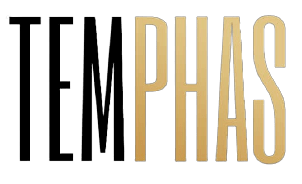NFTs and the Metaverse, What is the correlation?

Non-fungible tokens (NFTs) and the metaverse have exploded in popularity in recent years all around the world. Everyone has gotten on the NFT bandwagon, from athletes to musicians, actresses, and businesses, and the buzz around the asset class is apparent. People have invested and traded in NFTs to the tune of billions of dollars in sectors such as art, virtual real estate, sports, cinema, and gaming. In 2021, the market for NFTs was worth $41 billion. By 2025, the market is expected to reach $80 billion. NFTs are unique and valuable as an asset because they run on a blockchain network and cannot be swapped.
The Metaverse
A Metaverse is a virtual reality simulation. In these virtual worlds, users can attend concerts, visit art galleries, and travel to exotic locations using a virtual self — a custom-made avatar that can look as they choose.
There are also multiple Metaverses. And a number of companies are working on these, each with their own set of network protocols. These Metaverses all share the same goal: to allow more overlap between our physical and virtual worlds.
Cryptocurrencies are digital assets that are utilized as a medium of exchange and a store of value in these virtual worlds, while cryptos are largely employed for conducting transactions and other duties related to the physical world.
NFTs are a type of cryptocurrency that allows you to buy or sell one-of-a-kind digital artworks on the blockchain.
When it comes to paintings, only a few people can boast of having a Monet. Others can make prints of the original, but they aren’t worth nearly as much as the original because ownership isn’t transferred like it is with an impression.
What Is The Relationship Between NFT And The Metaverse?
Two hot issues, two areas with enormous business possibilities. NFTs and the metaverse can be described in this way. While these ideas have attracted a lot of media attention, headlines, and curiosity, they’ve also raised a lot of questions.
To comprehend the growing popularity of both NFTs and Metaverse, one must first comprehend their relationship. Users can manufacture, sell, and exchange objects in the form of NFTs on Metaverse, a shared virtual realm. Meta (Facebook) and Microsoft, for example, are planning to launch their own metaverse in the near future. Indeed, Facebook’s decision to change its name to Meta indicates that the business is placing a significant bet on the concept.
Gaming has also played a significant effect in the popularity of NFTs. Smooth Love Potion, Sand, and Enjin, among other tokens, are common in-game currencies in a variety of games. As a result, their prices have skyrocketed, and these coins are now exchanged on exchanges and have real-world worth.
Because NFTs are typically linked with websites and transactions that take place through web browsers, and the metaverse is mostly VR-based, there may be some uncertainty as to what their common ground is — or even if there is any at all. Thankfully, despite the fact that these concepts are still relatively new, numerous organizations have already developed innovative and productive methods to combine them.
Thanks to NFTs, users can have complete ownership over their digital assets in the Metaverse. Blockchain technology underlies these virtual worlds by providing irrefutable proof of ownership.
If you acquired a quantity of LAND in Decentraland, for example, the Metaverse would supply you with proof of confirmation in the form of NFTs, which the blockchain would guarantee.
In the Metaverse, NFTs are especially vital for creating unique spaces and boosting the digital community and social experiences.
People are utilizing NFTs in the metaverse to acquire virtual land, such as LAND – a digital piece of real estate in The Sandbox, as previously mentioned. Instead of a tangible deed, these virtual places use NFTs to show ownership of specific regions inside a virtual environment.
LAND occupies around 300 square feet in the Sandbox game world. The size of property parcels in Decentraland is reduced to 50 square feet. Users who own a large number of parcels of land can combine them to form a single estate. “The Secrets of Satoshi’s Tea Garden,” for example, is a Decentraland estate made up of 64 different parcels of land. Because of its size and location, it sold for 1.3 million MANA (about $80,000) in 2019. The “land” is completely encircled by digital highways, making it easy to navigate.
Cryptocurrencies are used to connect the physical and virtual worlds. They allow us to calculate the worth of digital assets in fiat currency as well as the returns on those assets over time. Because of the liquidity of crypto on exchanges all around the world, investors can make money by selling coins and NFTs directly to purchasers.
